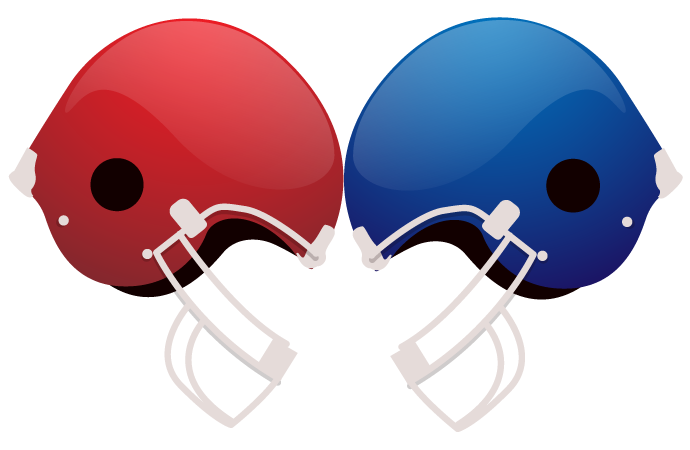Committee: NFL injuries similar across surfaces
The NFL’s rate of noncontact lower-extremity injuries was nearly the same on synthetic and natural turf in 2023, league officials told ESPN, the second time in three years those trend lines have essentially intersected.
The data, collected via a joint NFL/NFL Players Association committee, helps inform the ongoing debate over the safety of playing surfaces at the NFL’s 30 stadiums.
Jeff Miller, the NFL’s executive vice president for communications, public affairs and policy, said the similar rates point to a “need to look at all surfaces” for ways to improve. NFLPA executive director Lloyd Howell last fall called on all teams to convert to grass fields after New York Jets quarterback Aaron Rodgers tore his left Achilles tendon on MetLife Stadium’s synthetic turf. In a statement released to ESPN this week, the union said the numbers were close in 2023 only because injuries on grass fields increased.
“As we have said repeatedly,” the statement read, “injury data in a one-year time capsule does not account for what we have known since we started tracking these injuries: that a well-maintained, consistent grass surface is still simply safer for players than any synthetic field. The story of last year’s injury data is that, unfortunately, injury rates on grass have increased from last year.
“The data cannot, however, account for what players have shared with the NFL for years: that we feel much worse after playing on synthetic surfaces and overwhelmingly prefer consistent, high-quality grass fields.
“This year’s injury data also does not explain how quick they are to flip NFL stadium surfaces from bad synthetic to better grass for international soccer friendlies and tournaments.”
The NFL/NFLPA committee defines injuries that could be attributed to the playing surface as those that occur in the lower extremities, without contact from another player, and are serious enough to force missed games. They represent about one-third of all NFL injuries and about half of all lower-extremity injuries, according to Dr. Mackenzie Herzog, an epidemiologist at IQVIA and an adviser to the NFL and NFLPA.
In 2023, the incidence rate (per 100 plays) for such injuries was 0.001 higher on synthetic turf (0.043) compared with natural (0.042). That represented a total of six to eight injuries over the course of the 17-week season, Herzog said, making the rates “virtually identical.” There was a similar difference between the rates in 2021.
In 2022, the rate for synthetic turf was 0.048 and the rate for natural was 0.035.
“Sometimes the line for synthetic injuries goes up, and sometimes it goes down,” the NFL’s Miller said, “and the same for the natural turf line. We need to have a better appreciation for why that could be over time so that both lines are heading in the same direction, and both of them are going down.”
After the uproar over Rodgers’ injury, 10 other NFL players suffered Achilles tears during regular-season games. There were another 12 during preseason games and practices, and the total of 23 was in line with previous seasons. According to NFL chief medical officer Dr. Allen Sills, the NFL’s number of Achilles injuries has been between 20 and 22 since the league moved to a 17-game regular season.
“We did not see an epidemic of Achilles injuries this year,” Sills said.
Several teams replaced a type of synthetic turf called “slit film” after the 2022 season, noting that it had produced higher injury rates than other forms of turf and grass. Two others will do so after the 2023 season, leaving Cincinnati’s Paycor Stadium as the only facility without plans to replace slit-film turf before the 2024 season.
Despite the data, and as the NFLPA said in its statement, many players say they feel less sore after games on grass than they do after playing on turf. Sills and Miller said this week that the NFL/NFLPA committee has several research initiatives underway to address surface conditions, including the possibility of growing grass for indoor stadiums.
“We think that’s important work,” Sills said. “It has not been done to the level that we think would withstand the kind of forces that NFL players put on those fields right now, but that is a very active research stream as well.
In the meantime, the committee is researching the impact of establishing a consistent set of turf management and style protocols to reduce the adjustments players must make from stadium to stadium.
“We think that’s going to be an important driver in the reduction of injuries,” Sills said.
Independent of the playing surface, the NFL experienced an unquestioned decrease in serious injuries during the 2023 season, Miller said. Missed games due to all injuries were down by about 700 from 2022, largely because of a drop in lower-extremity injuries.
The NFL believes its intervention efforts — working with team medical and coaching staffs in the early weeks of spring training on ways to manage the “ramp-up” period and reduce training camp lower-extremity injuries — are paying off.
The NFL’s numbers show a 29% reduction in lower-extremity injuries during training camp and a 50% reduction in recurrence of those injuries throughout the year. Herzog said the number of regular-season games missed due to lower-extremity strains — which represent the league’s No. 1 injury burden — was down 24% from the previous two years.
“We’ve really focused on that — made it an offseason priority to talk with coaches, strength coaches, performance directors about trends and observations, particularly on how we bring players back,” Sills said. “We’ve seen the first two weeks of training camp really provide an opportunity to reduce strains.”
The NFL also said ACL injuries were down in 2023. It registered 52 ACL injuries across the preseason and regular-season games and practices, which the league said is down 24% from the average of the previous two seasons.
Meanwhile, concussion numbers were relatively stable. The NFL had 219 concussions across the preseason and regular-season games and practices, up from 213 in 2022.
The NFL did accomplish its goal of reducing concussions on kickoffs, with the number dropping from 20 in 2022 to eight in 2023, but Miller said that’s a direct result of fewer kicks being returned because of a rule change that spotted fair catches at the 25-yard line. The concussion rate on returned kickoffs, Sills said, remained the same as in previous years.
Miller said the competition committee plans to examine the kickoff again this offseason with the goal of keeping the play in the game but making it safer. He said the committee has studied the XFL rule and will continue to look for ways to alter the play to make it safer without making it go away.




